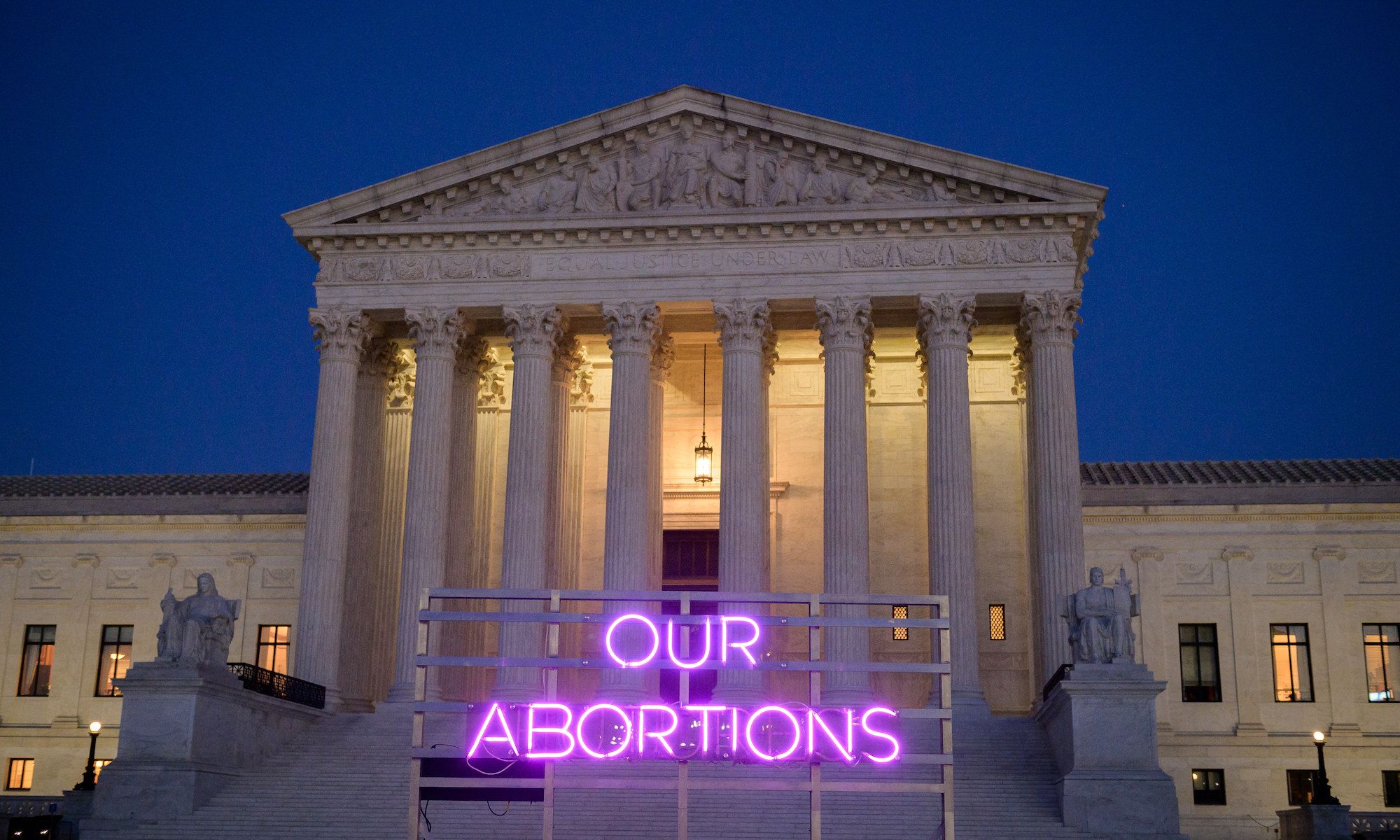A partial view of OURs (2022) by Alicia Eggert in front of the US Supreme Court in Washington, DC Photo by Christopher Thomas
Planned Parenthood and artist Alicia Eggert have joined forces on a cross-country, roving installation to advocate for abortion rights. Titled OURs, the pink neon sign flashes between the phrases “OUR BODIES,” “OUR FUTURES,” and “OUR ABORTIONS”. The installation debuted in front of the Supreme Court in Washington, DC on 22 January, the 49th anniversary of the Roe vs. Wade ruling that enshrined abortion rights in US law. The installation is continuing on its tour to several states over the next month.
Alexis McGill Johnson, president and chief executive of Planned Parenthood, describes the installation as a “beacon of light in the darkness of this moment”, referring to the increase in abortion restrictions in several state, as well as the Supreme Court’s recent indication that Roe vs. Wade could be overturned after having heard arguments in a case involving Mississippi’s restrictions on abortion in December.
McGill Johnson adds that the artwork “is both a reminder that we are all standing at the precipice of losing our constitutionally protected right to abortion, and that we will never stop calling for the freedom to decide our own futures, whether it’s at the Supreme Court or in states across the country.”
OURs is heading to Ohio this week before continuing to the remaining sites. While the exact location of each stop will not be publicly announced, the sites chosen focus on states whose lawmakers are challenging abortion rights.
“With over 36 million women—and more who can become pregnant—who are at risk of their state banning abortion if we lose the right to abortion, Planned Parenthood will never stop fighting for their ability to be seen and heard, and for lawmakers to meet the moment and the demand for protected access to safe, legal abortion, no matter what,” says McGill Johnson.
While on view, the installation will serve as a gathering place for supporters of abortion rights and, in some locations, it will be installed strategically so that it is visible to state lawmakers.
“Constant rhythmic flashing serves both to beckon people and also to warn them,” Eggert says in a statement. “Light is a universal symbol of hope, and when it comes to abortion access, this particular moment in time seems pretty dark and uncertain.”
Eggert adds that the sequencing of the work’s phrases points to the inseparability of the terms. “A person’s control over their own body determines how much control they have over their future, and how access to abortions is an essential part of that control,” the artist says. “We hope to illuminate the importance of abortion access at a critical time in history.”

